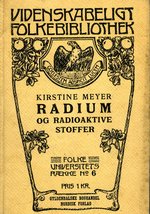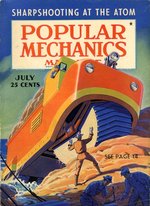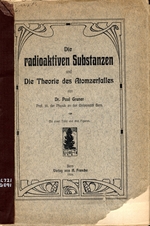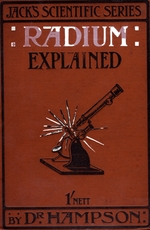While Rutherford and Curie experimented with radiation, other physicists were taking a mathematical approach to these newly discovered phenomena. In 1901 German researcher Max Planck published his "quantum hypothesis" which defined energy behavior in terms of a theoretically established constant. In 1905 Albert Einstein reinterpreted Planck’s hypothesis, imagining light as individual packets of energy - packets which later came to be known as "photons."
Einstein's theory put forth the founding tenets of quantum mechanics, a branch of physics which was then expanded tremendously by individuals like Max Planck, Wolfgang Pauli, Erwin Schrödinger, and Werner Heisenberg.1 2 By the mid-1920s, quantum mechanics was a fully established field used to describe and predict particle and wave behavior.
James Chadwick demonstrated, in 1932, the existence of the neutron, a particle with no charge residing in the nucleus of the atom.34 Later that year, John Cockroft and Ernest Walton bombarded a sample of lithium with protons which transmuted it into various elements, including helium. In so doing, the duo demonstrated conclusively that the atom could be split.
In 1934 Frédéric and Irène Joliot-Curie found that radioactivity could be created in non-radioactive elements through exposure to alpha particles. In the same year, Leó Szilárd expanded on recent findings, theorizing that a chain reaction could be created through neutron bombardment.5 This lead Szilárd to conceive of an atomic bomb, an idea he patented and transferred to the British Royal Navy in 1936.
In 1938 Otto Hahn and Fritz Strassman detected barium after treating uranium with neutrons. Lise Meitner and Otto Frisch established that this phenomenon was the result of fission, a discovery that ignited the interest of chemists and physicists around the world.6 7 In February 1939 researchers in Paris demonstrated that fission in uranium nuclei results in the ejection of additional neutrons which could then cause fission in additional nuclei, eventually resulting in a sustained chain reaction.8
On August 2, 1939, Leó Szilárd sent to President Franklin Roosevelt a letter penned by himself, Edward Teller, and Eugene Wigner, and signed by Albert Einstein. The letter briefly explained these recent monumental discoveries in physics and emphasized their wartime application in the form of an enormous bomb. Szilárd and his colleagues were afraid that Nazi physicists might be attempting to construct such a weapon and encouraged Roosevelt to institute an American bomb program immediately.
Notes
- 0070. Einstein, Albert. "Ueber das Relativitaetsprinzip und die aus demselben gezogenen Folgerungen." Jahrbuch der Radioaktivitaet und Elektronik, No. 4 (1907): pp. 411-462. IV. Leipzig: Hirzel, 1908. Return to text ↑
- 0193. Pauli, Wolfgang. Collected Scientific Papers. Ed. R. Kronig and V.F. Weisskopf. New York: Interscience, 1964. QC3 .P3. Return to text ↑
- 0241. Rutherford, Ernest, James Chadwick & C.D. Ellis. Radiations from Radioactive Substances. Cambridge: University Press, 1930. Return to text ↑
- 0053. Curie, Irene & F. Joliot. La Projection de Noyaux Atomique par un Rayonnement tres penetrant: L'Existence de Neutron. Paris: Hermann et Cie, 1932. Return to text ↑
- 0218. The Physical Review. Volume 56. Second Series. Number 7. Lancaster & New York: American Physical Society, October 1, 1939. Return to text ↑
- 0180. Meitner, Lise & O.R. Frisch. On the Products of the Fission of Uranium and Thorium under Neutron Bombardment. Kobenhavn: Munksgaard, 1939. Return to text ↑
- 0108. Hahn, Otto & Fritz Strassmann. Ueber das Zerplatzen des Urankernes durch langsame Neutronen. Berlin: Verlag der Akademie der Wissenschaften, 1939. Return to text ↑
- 0214. The Pysical Review. Volume 56. Second Series. Number 3. Lancaster & New York: American Physical Society, August 1, 1939. Return to text ↑




